Breaking
- MENU
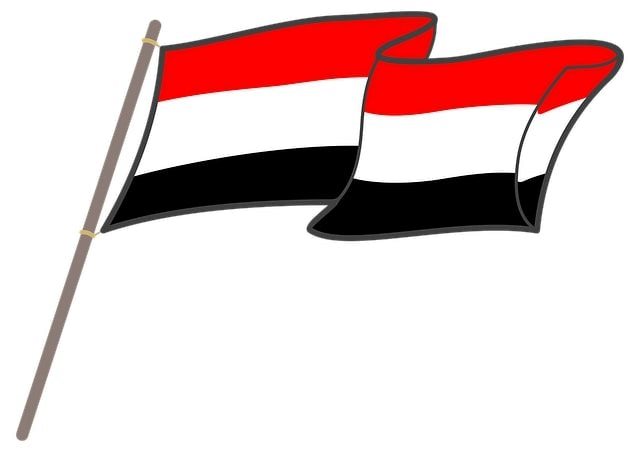
Yemen has been ravaged by conflicts for decades and there seems to be no end to it. Due to the ongoing civil war, Yemen has witnessed one of the worst humanitarian crises.[1] The civil war has left thousands of people internally displaced and several thousands dead. In the last five years, the Iran-Saudi rivalry has intensified in Yemen. Recently, in March, the warring factions in Yemen expressed their desire for a mutually acceptable ceasefire, followed by a ceasefire declaration from a Saudi-led alliance in April. What do these ceasefires really mean, particularly as coronavirus ravages the region?
Yemen's Complex Geopolitical Landscape
Yemen has a history of fractured polity, leading to tribal clashes, along with the presence of terrorist groups such as the Islamic State of Iraq and Syria (ISIS) and al-Qaeda in the Arabian Peninsula (AQAP). As a result, the country is undergoing massive humanitarian crises due to the internal displacement of people on a large scale. The recent figures from United Nations High Commissioner for Refugees (UNHCR) estimate that, “Over 80 per cent have been displaced for more than a year.”[2] In 2019, the death toll in Yemen had reached 100,000 since the war began five years ago, which includes 12,000 civilian casualties, as per the Armed Conflict Location and Event Data Project (ACLED)[3]. The principal power struggle lies between the UN-recognised government of Mansour Hadi, supported by Saudi Arabia and the United Arab Emirates (UAE), and the Iranian-backed Houthis.
The Houthis belong to the Zaydi sect of Shias, which comprise nearly 40 per cent of the Yemeni population[4]. Under the al-Ahmar family, Zaydis had ruled over Northern Yemen for almost a millennium before being overthrown in a coup in 1962. For next three decades, the Zaydis who “for centuries had been at the top of country’s social pyramid” were marginalised both politically and economically by the government, which finally led to the creation of Ansar Allah movement founded by Mohammad Badr al-Din Houthi along with Muhammad Izzan[5].The movement soon turned into an armed movement which carried out extensive military campaigns during 2002-09 in the hope of securing greater political
Participation. The Houthis achieved a breakthrough in September 2014 when they captured capital Sanaa and placed President Mansour Hadi under house arrest. Later in January 2015, President Hadi resigned and escaped to Saudi Arabia, where he pleaded to the international community to restore his elected government in Yemen. As a result, in March 2015, an alliance led by Saudi Arabia and UAE and comprising of several other Arab countries, with logistics and intelligence support from the US, commenced the military campaign against the Iranian-backed Houthi militia in Yemen. This intervention significantly complicated the prospects of any peace in the existing multi-dimensional regional crisis. What makes it even more difficult to find any solution to the problem is that each faction has its vision for the future of Yemen.
In a war-ravaged country that continues to fight the bloody civil war, the advent of COVID-19 has exposed the people of Yemen to a completely new set of challenges. Though the country has seen only one confirmed case so far, the lack of testing facilities could mean that several cases especially among the internally displace people and refugees might have gone unnoticed. In the light of increasing threat of pandemic that has crippled the functioning of daily life all over the world, the UN Secretary-General has called for an “immediate global ceasefire in all corners of the world” and made an appeal “to put armed conflict on lockdown and focus together on the true fight” of human lives.[6]
Driven by the seriousness of the crisis, the Saudi-led coalition announced a two-week ceasefire on April 09. In response, Houthi spokesperson Mohammed al-Bukhaiti stated, “We will continue to fight and target their military installations and industrial sites since they continue with the siege…There has to be total end of the siege or else the war will continue.”[7] Iran, so far, has not taken an official position on the ceasefire. However, Hossein Amir Abdollahian, a senior foreign policy adviser to the Iranian Parliament, had stated, “Ending strikes in Yemen is a good move, but the unsustainably Saudi-initiated some-day truce...is not the solution.”[8] Houthis have also alleged that despite the declaration of a ceasefire, airstrikes have been carried out by the coalition[9]. The Houthis want more guarantees from the UN that the other side will not exploit their withdrawal.
COVID-19: A New Phantom
On April 10, Yemen’s Supreme National Emergency Committee confirmed the first case of COVID-19 infection in the Hadramout Province[10], which now has been put under a partial curfew.[11] The border with the neighbouring al-Mahra Province has been sealed, as informed by Farag al-Bouhsni, Governor of Hadramout Province.[12] In March, the World Health Organisation (WHO) warned against a ‘pending explosion’ of COVID-19 cases in Yemen[13]. In response to the potential spread of the pandemic, the government started taking precautionary measures as early as mid-March. The Hadi Government announced the shutting down of airports, border-crossings and schools. In a televised speech, Yemen’s Prime Minister Maeen Abdulmalik Saeed asked the nation to be “ready for the pandemic.”[14] Some 50,000 Yemenis who returned home have already been tested for the virus since January 18, and for any future tests to be conducted, the country is increasingly dependent on help from outside. Yemen’s existing stock of testing kits has been consumed. The government is counting on support from the WHO, King Salman Humanitarian Aid and Relief Center and the international community to fight COVID-19.[15] Yemen’s Prime Minister has called all warring factions to set aside their differences and focus on preventive measures to fight this pandemic.
The Yemeni healthcare system remains one of the most fragile in the region, particularly in rural areas of the country. A lot of medical facilities and infrastructure in Yemen has been a casualty of airstrikes during the civil war. In places where conflict is no longer continuing, the wrecked healthcare infrastructure has not been overhauled. In a war ravaged country, reaching out to people even for providing essential supplies such as food and medicine has become extremely difficult. Any support from WHO or other stakeholders under present situation may not be very effective. Altaf Musani, the WHO representative in Yemen, has stated, “Health system is functioning at 50 per cent of its capacity in Yemen.”[16] Taha al-Mutawakel, Health Minister of Houthis’ National Salvation Government, has similarly warned that “93% of medical devices and equipment were out of readiness.”[17]
In the past, Yemen has struggled to deal with starvation, malnutrition and various other virulent yet deadly diseases such as cholera, diphtheria and dengue. But battling Covid-19 is going to be an uphill task. Another cause for worry would be the recent announcement by the US to cut healthcare aid to Yemen[18] as well as cuts to aid provided by the World Food Programme owing to budgetary constraints, which are likely to affect several Houthi-controlled areas.[19] Moreover, the Donald Trump administration's move to halt funding to WHO[20] would severely undermine WHO's efforts in Yemen. In a nation that is facing one of the worst humanitarian crises in recent history, dealing with COVID-19 is going to be extremely tough. The role of Iran and Saudi Arabia would become crucial in avoiding the deterioration of COVID-19 crisis. To a great extent, the outcome of the COVID-19 crisis in Yemen would depend upon the response of regional and international stakeholders.
Iran-Saudi Rivalry
The Saudi-Iran rivalry is being played out in Yemen, making it extremely difficult for any peace deal to come through. In March, the Saudi-led Operation Decisive Storm, often dubbed as Saudi Crown Prince Mohammad Salman’s war, has completed five years of operations.[21] Earlier in 2015, when the operation commenced with massive bombing campaigns and naval blockade, perhaps it was thought that it would promptly reinstate Mansour Hadi’s government in Sanaa. Instead, backed by Tehran, Houthis have demonstrated a strong defence, and the conflict has prolonged with a continuous military stalemate in various provinces, effectively turning Yemen into a battlefield of Iran-Saudi rivalry.
In May 2015, a study published by the Manohar Parrikar Institute for Defence Studies and Analyses (MP-IDSA) had cautioned that “Yemen is heading towards becoming another theatre of Shia-Sunni conflict or proxy war between Iran and Saudi Arabia.”[22] Over the last five years, the assessment has been repeatedly ascertained. Saudi Arabia has carried out extensive military campaigns with minimal success. Iranian support to Houthis has systematically grown after the beginning of Saudi campaign with the shipment of small arms to include heavy artillery, unmanned aerial vehicles (UAVs) and even small range surface-to-surface missiles (SSMs). In 2015, as per the SIPRI Arms Database, an agreement of sale was finalised between the Houthis and the Iranian regime to deliver 10 Qiam-1 SSMs[23]. The delivery of weapons finally took place in 2017. A study by London–based International Institute for Strategic Studies (IISS) notes, “It was only after the launch of Operation Decisive Storm that Iran shifted from providing assistance to the Houthis to forming something closer to an alliance with them.”[24]
Despite the declaration of a “comprehensive ceasefire” by Saudi Arabia, Tehran is yet to make an official statement on the issue. However, given the impact of COVID-19 pandemic in Iran and its sanctions hit economy, it is unlikely that Tehran would have sufficient resources to actively stay involved in the Yemeni conflict. Riyadh too is exhausted with the war and deeply affected by falling oil prices in addition to its internal political problems. In such a situation, Riyadh may look for an honourable exit from Yemen’s war theatre[25]. It can be argued that under present circumstances, both Iran and Saudi Arabia have sufficient number of reasons to make the ceasefire work.
The cooperation of UAE, a partner of Riyadh in the coalition, would be equally crucial. The UAE, like Saudi Arabia, too seeks to end its direct military involvement in the conflict. In March, UAE had sent medical supplies to Iran amid the coronavirus crisis, followed by an official call between the foreign ministers of the two countries[26]. This signals a positive development that might serve as an opportunity for Tehran and Riyadh to bridge gaps through Abu Dhabi.
Prognosis
Amidst the COVID-19 pandemic, Yemen’s current predicament with large-scale humanitarian emergency, coupled with presence of terrorist groups, could have serious consequences for the entire region. The Yemeni conflict has already engulfed Saudi Arabia, UAE and Oman. It is imperative to come up with long-lasting options to end the civil war; otherwise, country’s vulnerability would expand to the whole Arabian Peninsula. Undoubtedly, the ceasefire is a welcome development, but there are some serious doubts about the effectiveness of the ceasefire. Since 2015, the Yemeni conflict had been a saga of ceasefires and their relentless violations. Therefore, it is difficult to believe that this time it is going to be any different unless both sides adhere to it.
However, the malaise of COVID-19 – a common concern for all in the region – may be a reason for some optimism. The abidance to ceasefire does not mean an end to the conflict, but it surely would work as a confidence-building measure, at least for now, to address the bigger challenge of coronavirus. No peace initiative will work without cooperation between Riyadh and Tehran. Perhaps, the pandemic could be an opportunity to reduce, if not entirely end the Iran-Saudi rivalry in Yemen.
Note: This article was originally published in Manohar Parrikar Institute for Defence Studies and Analyses (IDSA Issue Brief) on 24 April 2020 and has been reproduced with permission. Web Link
As part of its editorial policy, the MEI@ND standardizes spelling and date formats to make the text uniformly accessible and stylistically consistent. The views expressed here are those of the author and do not necessarily reflect the views/positions of the MEI@ND. Editor, MEI@ND: P R Kumaraswamy
[1]UN News, “Humanitarian crisis in Yemen remains the worst in the world, warns UN”, 14 February 2019 (Accessed 17 April 2020).
[2] United Nations High Commissioner for Refugees (UNHCR), “UNHCR OPERATIONAL UPDATE”, 09 April 2020 (Accessed 09 April 2020).
[3] Peter Beaumont, “Death toll in Yemen war reaches 100,000”, The Guardian, 31 October 2019 (Accessed 17 April 2020).
[4] Meena Singh Roy, M. Mahtab Alam Rizvi and Zaki Zaidi, “Crisis in Yemen: Imperatives for Region and Beyond”, MP-IDSA Issue Brief, Manohar Parrikar Institute for Defence Studies and Analyses, 05 May 2015 (Accessed 17 April 2020).
[5] The International Institute for Strategic Studies (IISS), “Iran’s Networks of Influence in the Middle East”, November 2019, p.161.
[6]UN News, “COVID-19: UN chief calls for a global ceasefire to focus on ‘the true fight of our lives’”, 23 March 2020 (Accessed 17 April 2020).
[7] Al Jazeera, “Saudi-UAE unilateral ceasefire in Yemen begins; Houthis balk”, 09 April 2020 (Accessed 17 April 2020).
[8]Tehran Times, “Temporary Saudi ceasefire in Yemen not solution: advisor”, 11 April 2020 (Accessed 17 April 2020).
[9] Mehr News Agency, “Saudi ceasefire aims at diverting public opinion: Yemen Ansarullah”, 12 April 2020 (Accessed 17 April 2020).
[10]Al Jazeera, “Yemen confirms first coronavirus case, braces for outbreak”, 10 April 2020 (Accessed 17 April 2020).
[11] The Guardian, Bethan McKernan, “Health workers' worst fears confirmed as Covid-19 reaches war-torn Yemen”, 10 April 2020 (Accessed 17 April 2020).
[12] Ibid
[13] Naseh Shaker, “WHO warns Yemen of pending 'explosion' of COVID-19 cases”, Al-Monitor, 24 March 2020 (Accessed 17 April 2020).
[14]Arab News, “Yemen government takes new steps to beat COVID-19”, 18 March 2020 (Accessed 17 April 2020).
[15] Ibid
[16] Saeed Al-Batati, “Coronavirus outbreak will overwhelm Yemen’s health system: WHO”, Arab News, 24 March 2020 (Accessed 17 April 2020).
[17]Almasirah Media Network, “Health Minister Holds Aggression Countries Responsible for Bad Situation in Health Sector”, 21 March 2020 (Accessed 17 April 2020).
[18] Michael LaForgia, “U.S. Cuts Health Care Aid to Yemen Despite Worries About Coronavirus”, The New York Times, 27 March 2020 (Accessed 17 April 2020).
[19]BBC News, “Yemen: World Food Programme to cut aid by half in Houthi-controlled areas”, 10 April 2020 (Accessed 17 April 2020).
[20] Jessie Yeung, “The US is halting funding to the WHO. What does this actually mean?”, CNN, 16 April 2020 (Accessed 17 April 2020).
[21] David D. Kirkpatrick, “Yemen Has Been a Saudi Prince’s War. Now It’s His Quagmire”, The New York Times, 18 July 2019 (Accessed 17 April 2020).
[22] Meena Singh Roy, M. Mahtab Alam Rizvi and Zaki Zaidi, no. 4.
[23] See Stockholm International Peace Research Institute, “SIPRI Arms Transfer Database”, (Accessed 17 April 2020).
[24] The International Institute for Strategic Studies, no. 5, p.163.
[25]Sana’a Center for Strategic Studies, “Five Years since Decisive Storm – The Yemen Review, March 2020”, 01 April 2020 (Accessed 17 April 2020).
[26] Andrew Parasiliti, “The Takeaway: March 18, 2020”, Al-Monitor, 18 March 2020 (Accessed 17 April 2020).

Meena Singh Roy is a Research Fellow and heads the West Asia Centre at the Manohar Parrikar Institute for Defence Studies and Analyses (IDSA). She holds Ph. D., form Delhi University and her areas of specialization are Central Asia and West Asia. Before joining IDSA, she was a senior research scholar in the Department of African Studies, Delhi University. She was associated with the Institute of Commonwealth Studies, School of Oriental and African Studies and London School of Economics for her research work. In 2014, she was a visiting Research Fellow with the German Institute of Global and Area Studies (GIGA), Hamburg. Her publications include The Shanghai Cooperation Organization: India Seeking New Role in the Eurasian Regional Mechanism (2014). She has edited Changing Security Paradigm in West Asia: Regional and International Responses (2020, KW Publishers); Ideology, Politics and New Security Challenges in West Asia (Pentagon Press, 2018); International and Regional Security Dynamics: Indian and Iranian Perspectives (IDSA, 2009) and Emerging Trends in West Asia: Regional and Global Implications (Pentagon Press, 2014).
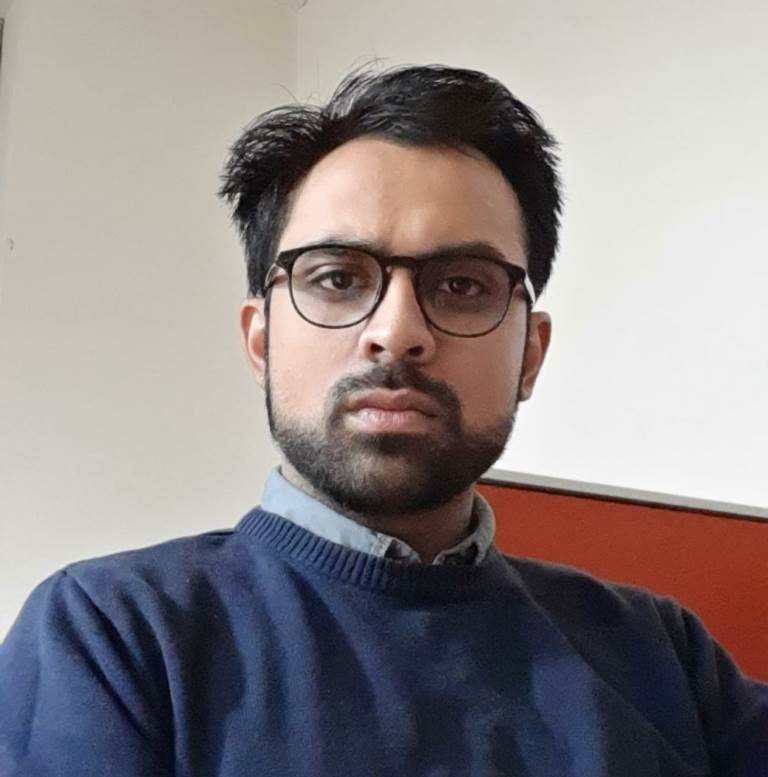
Prabhat Jawla has a Master’s degree in international relations from South Asian University, New Delhi. His areas of interest include geopolitics in West Asia with a particular focus on IRGC, Iran’s domestic and foreign policies and Indo-Iraq relations. He had worked as a research intern in West Asia Centre at Manohar Parrikar Institute for Defence Studies and Analyses (MP-IDSA) and he tweets at @aprabhatjawla.
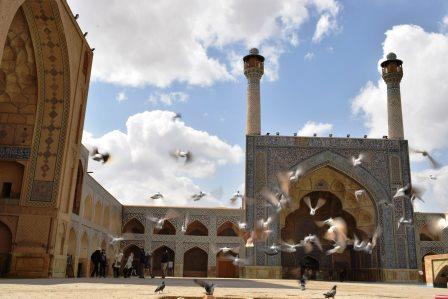
Summary: Iran is battling the COVID-19 pandemic amidst limited resources, a weak economy and a diffi.....
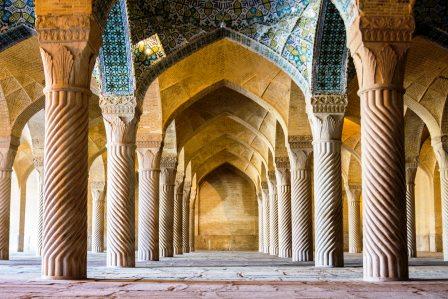
In an exclusive interview to West Asia Watch, conducted by Dr. Meena Singh Roy, Dr. Bijan Khajehpour.....
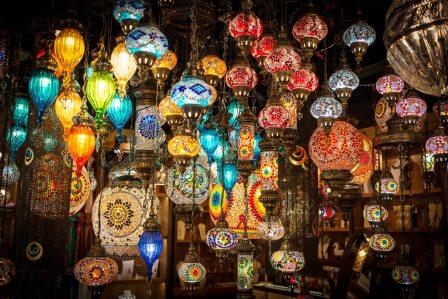
As part of India’s outreach to North Africa, External Affairs Minister (EAM) Sushma Swaraj pai.....
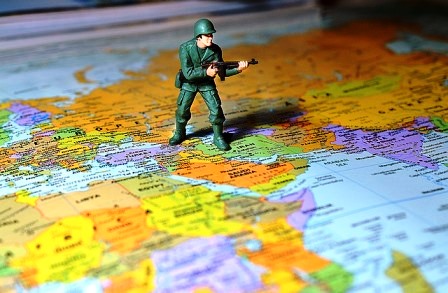
The geopolitical dynamics in West Asia and North Africa (WANA) is such that it allows global powers .....
